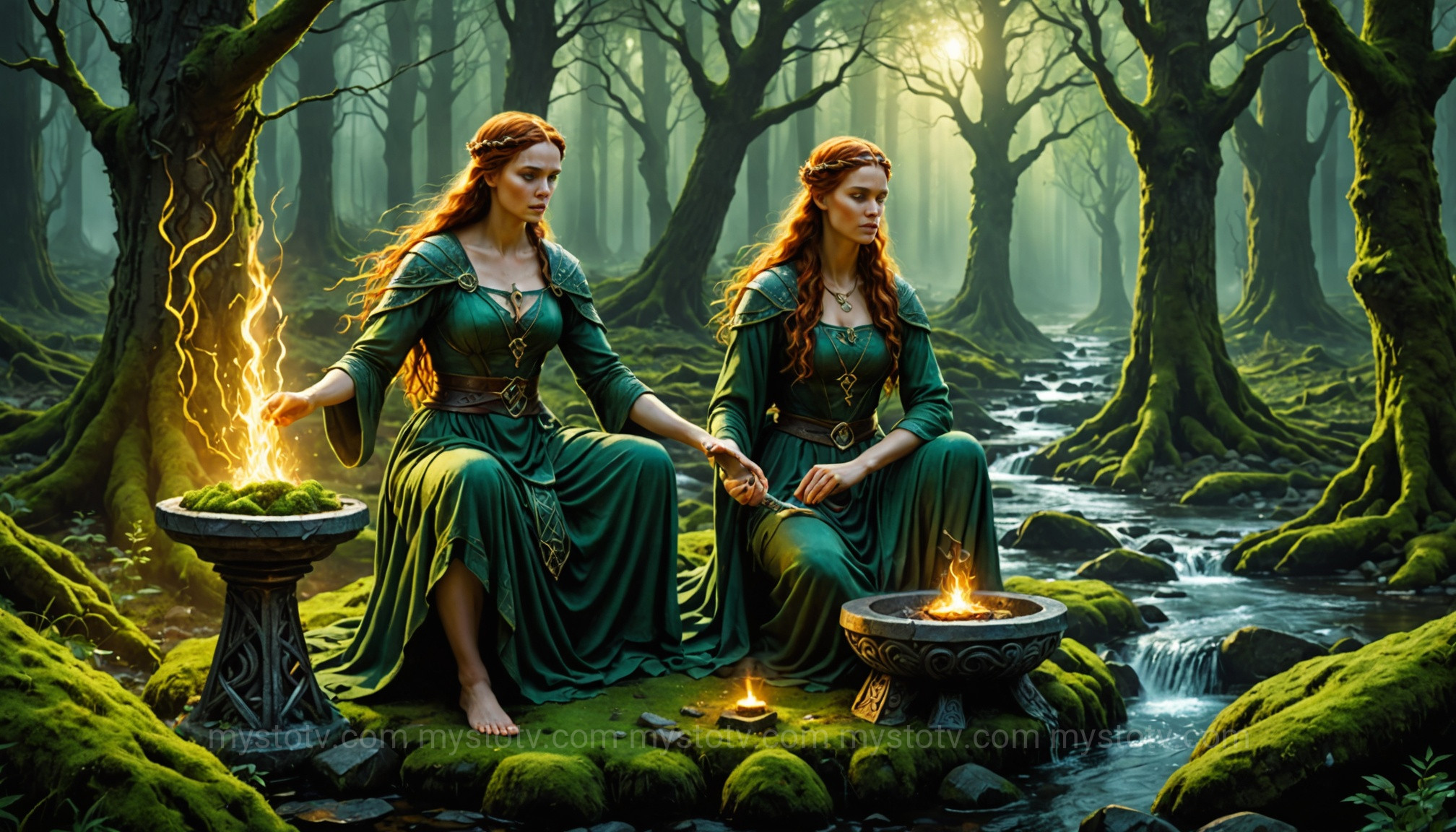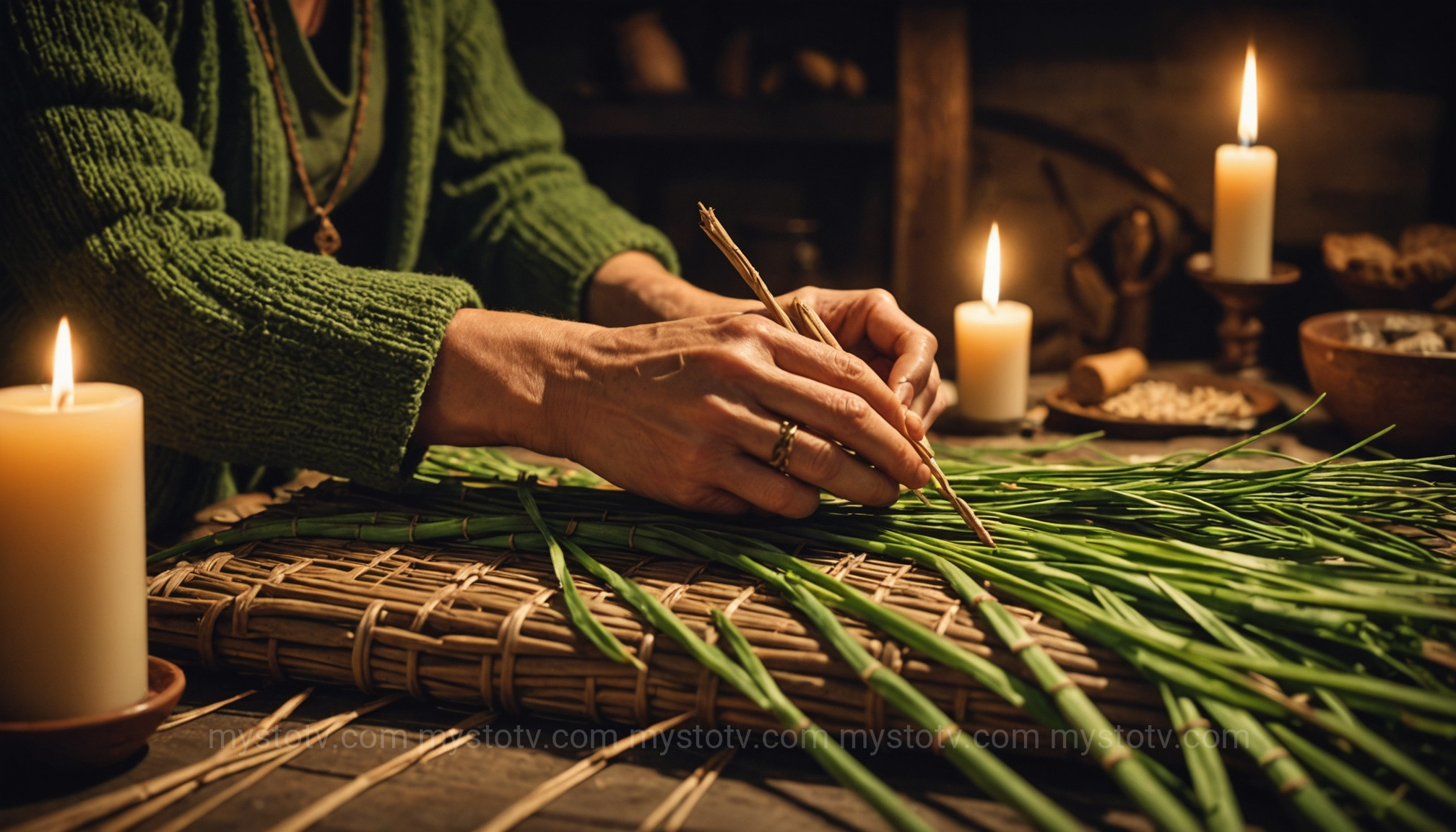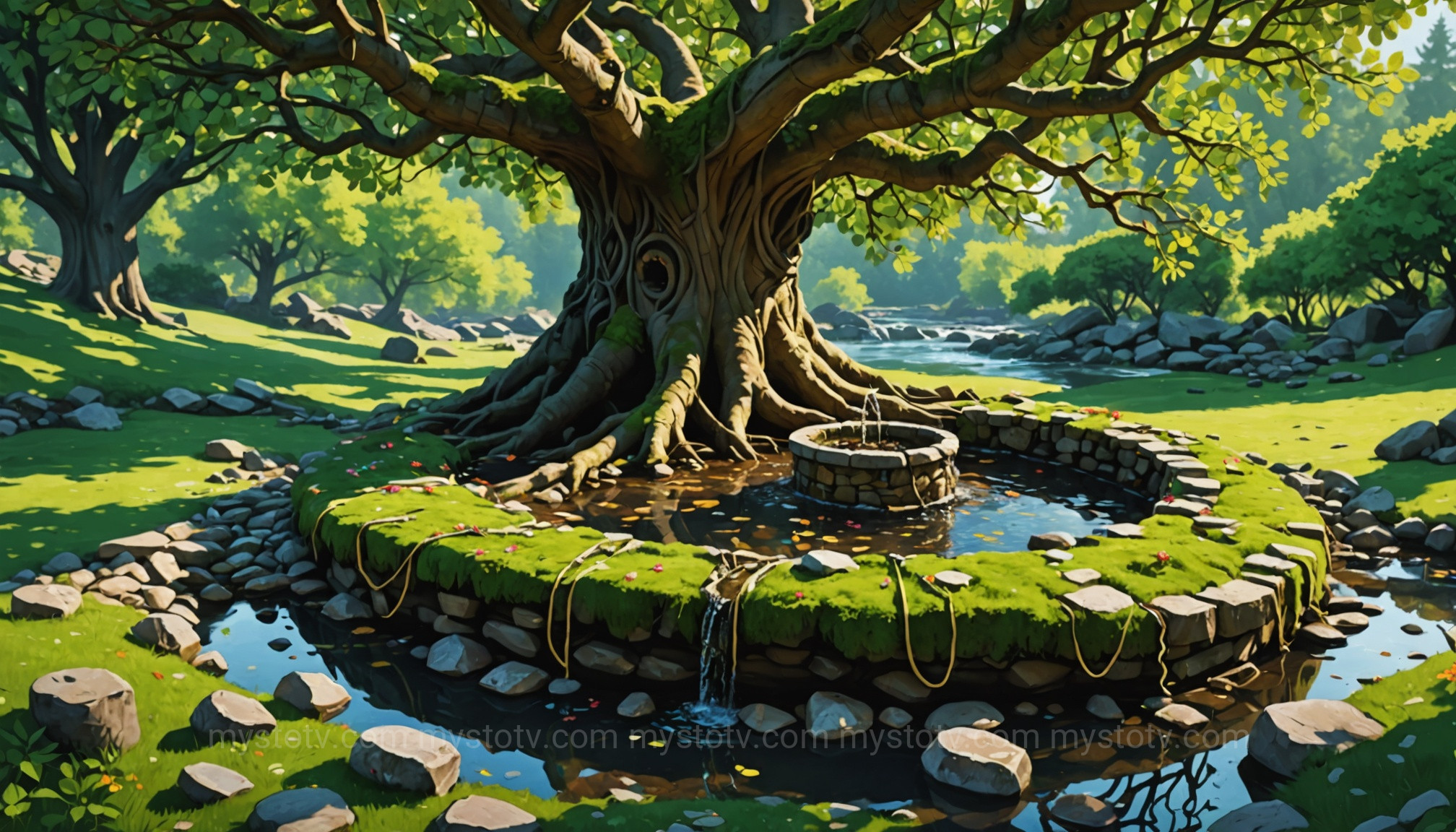Contents
- 1 The Ancient Origins of Celtic Goddess Brigid Worship
- 2 Syncretism and Survival: The Transformation within Celtic Goddess Brigid Worship
- 3 Traditional Rituals and Symbols in Celtic Goddess Brigid Worship
- 4 The Resurgence of Celtic Goddess Brigid Worship in Modern Paganism
- 5 Conclusion: The Ever-Burning Flame of Celtic Goddess Brigid Worship
The Ancient Origins of Celtic Goddess Brigid Worship

The roots of Celtic goddess Brigid worship sink deep into the soil of pre-Christian Europe, particularly in Ireland. She is widely considered one of the most powerful and beloved deities of the Tuatha Dé Danann, the pantheon of gods and goddesses in Irish mythology. Her worship was not confined to a single aspect of life but permeated its most crucial domains, reflecting a sophisticated understanding of the interconnectedness of creativity, survival, and well-being. Analyzing these origins shows a society that placed immense value on the skills and inspiration Brigid governed, seeing them as divine gifts essential for community thriving.
The Triple Goddess Aspect
One of the most defining characteristics of Brigid is her nature as a "triple goddess." This doesn't necessarily mean she was three separate deities, but rather a single goddess with three distinct yet unified facets. This triplicity was a common theme in Celtic spirituality, symbolizing wholeness, cycles, and the convergence of powerful forces. The three faces of Brigid were:
- The Poet (Fire of the Head): Brigid was the patroness of poets, bards, and storytellers. In Celtic culture, poetry was not mere entertainment; it was a sacred art, a vessel for history, law, and prophecy. This "fire of the head" represented divine inspiration, knowledge, and the power of the spoken word. Devotion to this aspect of Brigid sought the gift of Awen, or sacred, flowing inspiration.
- The Healer (Fire of the Hearth): As a goddess of healing, Brigid was associated with sacred wells and springs, whose waters were believed to have curative properties. She oversaw healers, herbalists, and midwives, protecting the health of the community and the continuity of life. This "fire of the hearth" symbolized nurturing, compassion, and the restorative power of nature.
- The Smith (Fire of the Forge): Brigid was also the patroness of smithcraft. Smiths held a high, almost magical status in Celtic society, as they were masters of transformation, turning raw ore into tools, weapons, and art. This "fire of theforge" represented transformation, craftsmanship, skill, and the power to shape one's reality.
Analysis of Brigid's Domains
The specific domains of Celtic goddess Brigid worship—poetry, healing, and smithcraft—were not randomly chosen. They represent the three pillars of a thriving ancient society. Smithcraft provided the physical tools for survival and defense. Healing ensured the physical well-being and continuation of the tribe. Poetry and lore provided the cultural and spiritual glue, preserving the identity, history, and wisdom of the people. Brigid’s oversight of all three demonstrates her position as a foundational deity, integral to every facet of Celtic life.
Syncretism and Survival: The Transformation within Celtic Goddess Brigid Worship
The arrival of Christianity in Ireland in the 5th century CE presented a significant challenge to the established traditions of Celtic goddess Brigid worship. Rather than being eradicated, however, the goddess underwent a remarkable transformation. This process, known as syncretism, saw her attributes, feast day, and folklore absorbed into the figure of a new Christian saint: St. Brigid of Kildare. This blending was so seamless that it's often difficult to distinguish where the goddess ends and the saint begins. The analysis of this period reveals a clever strategy of cultural preservation, allowing the core tenets of Brigid's veneration to survive under a new religious framework.
The Rise of St. Brigid of Kildare
According to hagiography (the writing of the lives of saints), St. Brigid was a 5th-century abbess who founded a monastery in Kildare, a site that was likely a former pagan center for the goddess's worship. The stories told about the saint are filled with miracles that echo the domains of the goddess. She could hang her cloak on a sunbeam, multiply food and drink, heal the sick, and was known for her immense compassion and generosity. Her feast day was established as February 1st, the same day as the ancient pagan festival of Imbolc, which marked the beginning of spring and was dedicated to the goddess Brigid.
Interpreting the Merger
The syncretism between goddess and saint was likely a two-way street. For the early Christian church, absorbing such a powerful and beloved local deity into their own canon was a pragmatic way to convert the populace with minimal resistance. For the Irish people, it provided a way to continue their ancestral practices. They could still light fires on February 1st, weave protective crosses, and visit sacred wells, all under the acceptable patronage of a Christian saint. This ensured the survival of the essential elements of Celtic goddess Brigid worship for over a thousand years, hidden in plain sight within Catholic tradition.
Traditional Rituals and Symbols in Celtic Goddess Brigid Worship

The continuity of Celtic goddess Brigid worship, both in its pagan and sainted forms, is most evident in its rich tapestry of folk traditions, rituals, and symbols. These practices, passed down through generations, are not merely quaint customs but are imbued with deep meaning, connecting practitioners to the rhythms of the earth and the protective, inspiring energy of Brigid. Many of these traditions revolve around her festival of Imbolc.
The Festival of Imbolc
Celebrated on February 1st, Imbolc (meaning "in the belly") is a fire festival that marks the midpoint between the winter solstice and the spring equinox. It is a time of hope and purification, celebrating the first stirrings of spring and the return of light. Traditional Imbolc activities central to Celtic goddess Brigid worship include:
- Lighting Fires: Bonfires and candles are lit to honor Brigid's connection to fire and to welcome the strengthening sun.
- Spring Cleaning: Homes are thoroughly cleaned to sweep out the stagnant energy of winter and create a fresh space for spring's blessings.
- Brigid's Bed: A small doll, known as a Brídeóg, is made to represent Brigid and placed in a "bed" near the hearth to invite the goddess's presence and blessings into the home.
Crafting Brigid's Cross
Perhaps the most iconic symbol associated with Brigid is her cross. Traditionally woven from rushes or straw, it features a distinctive four-armed, pinwheel-like design. On the eve of Imbolc, families would craft these crosses and hang them over doorways and in barns. Their purpose was to invoke Brigid's protection over the home, its inhabitants, and livestock for the coming year. The act of weaving itself is a meditative practice, a creation of a sacred object that embodies the principles of the goddess. The enduring popularity of this craft is a direct link to ancient forms of Celtic goddess Brigid worship.
Visiting Sacred Wells

Brigid's association with healing is strongly connected to holy wells and springs. For centuries, people have made pilgrimages to these sacred sites to pray for healing, leaving offerings in return. A common practice is to dip a piece of cloth (a clootie) in the well's water, wash the afflicted part of the body with it, and then tie the cloth to a nearby tree. As the cloth disintegrates over time, the ailment is believed to fade with it. This tradition beautifully merges the physical and spiritual, acknowledging the healing power of both faith and nature.
The Resurgence of Celtic Goddess Brigid Worship in Modern Paganism
In the 20th and 21st centuries, there has been a significant revival of interest in pre-Christian spiritual paths. Within this Neo-Pagan movement, which includes traditions like Wicca, Druidry, and Goddess Spirituality, Brigid has emerged as one of the most revered and widely honored deities. The modern practice of Celtic goddess Brigid worship is both a reconstruction of ancient ways and a creative reinterpretation of her archetypes for contemporary life. This resurgence demonstrates her timeless appeal and the adaptability of her core messages of inspiration, healing, and positive transformation.
Brigid in the Modern Age
For modern Pagans, Brigid is a powerful and accessible goddess whose domains translate seamlessly into current-day challenges and aspirations. Her aspects are interpreted in new ways:
- The Poet: She is the patroness of all creative arts—not just poetry, but writing, music, painting, and digital media. She inspires artists to find their authentic voice and share their truth.
- The Healer: Her healing domain now encompasses holistic health—physical, mental, emotional, and spiritual. She is invoked for personal healing journeys, as a patroness of therapists and counselors, and for the healing of the Earth itself.
- The Smith: The forge is now a metaphor for personal transformation. She is the goddess of activism, social justice, education, and any endeavor that requires skill, passion, and the courage to forge a better world.
Contemporary Rituals and Community
Modern Celtic goddess Brigid worship often involves both solitary practice and community gatherings. Pagans around the world celebrate Imbolc with rituals that blend ancient traditions with modern sensibilities. They light candles in urban apartments, craft Brigid's crosses, create art in her honor, and engage in social action as a form of devotion. Online communities and local groups share knowledge, rituals, and inspiration, creating a global network of devotees who find strength and connection through their shared reverence for this powerful Celtic goddess.
Conclusion: The Ever-Burning Flame of Celtic Goddess Brigid Worship
From the misty hills of ancient Ireland to the global digital hearths of the 21st century, the flame of Brigid has never been extinguished. Her journey from a powerful Tuatha Dé Danann goddess to a beloved Christian saint and back to a central figure in modern spirituality is a powerful narrative of resilience and relevance. The principles she embodies—inspiration, healing, and transformation—are as vital today as they were thousands of years ago. The continued practice and evolution of Celtic goddess Brigid worship demonstrate that her fire is a perpetual one, offering light, warmth, and the promise of renewal to all who seek it.